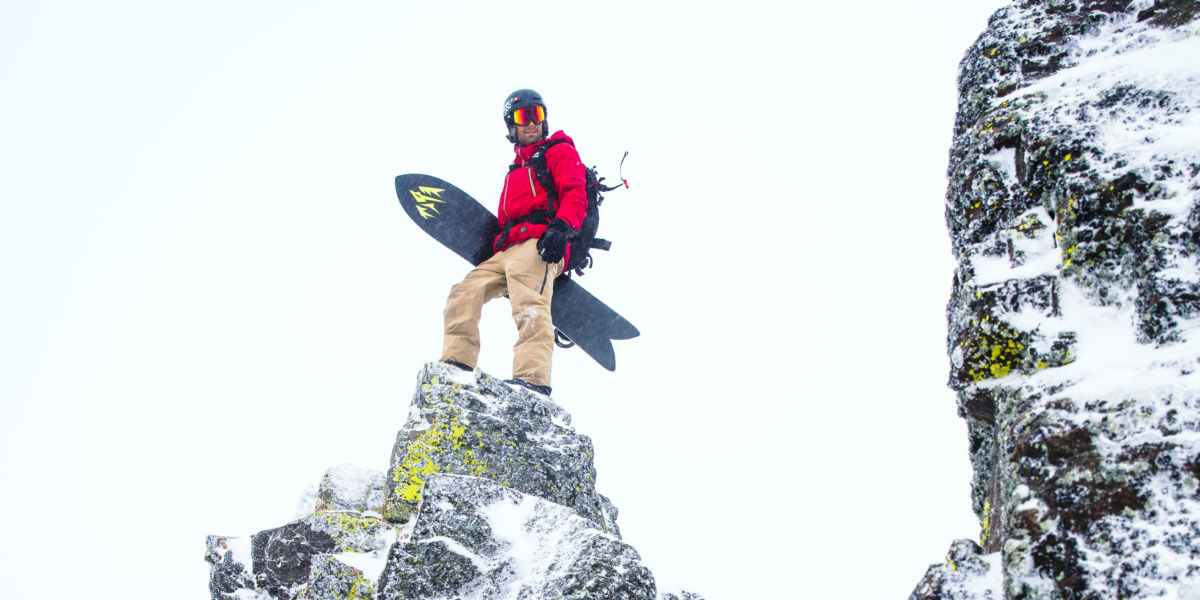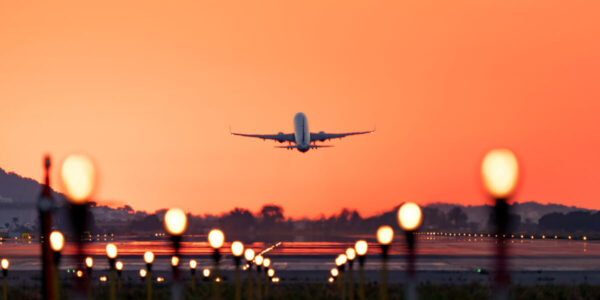
This Pro Snowboarder Is Fiercely Fighting Climate Change

When Jeremy Jones, the best big-mountain snowboarder on the planet, went looking to settle down, he didn’t choose Colorado or Chile or the high reaches of the Swiss Alps. He chose California. “I’m in San Diego right now with my family getting one last hit of beach time before a long winter,” says the 41-year-old father of two, speaking in late November. But the storms are beginning to creep into the Sierra Nevada, his home range, and he’s feeling the itch. “I think I’ll cut my surf trip short and drive to the snow.”
Getting to the snow has been something of a defining theme for the 11-time Snowboarder Magazine “Big Mountain Rider of the Year.” After dominating the sport for years, Jones set off on another path, one less traveled. Whereas most of today’s big-mountain riders use prop planes, helicopters, or snowmobiles to access the world’s highest peaks, Jones employs a more old-school method: the power of his own legs. It’s called backcountry skiing (and snowboarding)—and though it’s been around since the dawn of downhill, lately the sport has enjoyed a renaissance, with resorts throughout the West opening up vast areas of wild, ungroomed terrain for exploration.
“Only 5 to 10 percent of the world’s mountain ranges can be accessed by machines,” Jones explains. “The rest require hiking, sometimes for days or even weeks. But the opportunities are endless. We’re just scratching the surface.”
Backcountry ski trips aren’t for everyone: They require time, endurance, and often some basic mountaineering skills. They also require the right gear. Jones became one of the first professional snowboarders to use what’s called a split-board, which is basically a snowboard that breaks in two, allowing you to ascend the slopes. At the top of the mountain, you snap the two sides back together and zoom down.
And no one zooms like Jones. He grew up on Cape Cod but found himself pulled toward the big, wild mountains of the West. Along with his two brothers, he’s produced and starred in a trilogy of films about his backcountry quests titled, appropriately, Deeper, Further, and Higher.
In Further, he embarked on longer expeditions, to areas he’d never reached before, camping at one point for more than a month in Alaska’s Wrangell–St. Elias Range to tackle ridiculously steep faces that, he says, “definitely passed my comfort level in the mountains.”
Snowboarding trips take Jones all over the globe, but at the end of every season, he looks forward to returning to his home in Truckee, outside Lake Tahoe, and skiing the terrain in his own backyard. “The snowboarding I’m most excited about these days is the stuff that’s close to me,” says Jones. “There’s so much to be inspired by in the Sierra—it’s mind-blowing. It’s refreshing to hop in a car and go to an unknown trailhead with everything I need on my back. Every time I stand on one peak, I see 10 more. I could ride a new line every day of my life just staying right here.”
That is, if there’s snow. When Jones moved to the Sierra, in 1994, frequent, heavy storms were common. Lately, however, not so much. In fact, Jones says that last winter was the first in five years where the snowpack was even close to normal. “It was an average winter,” he says. “Average is the new epic.”
The existential threat that climate change poses has never been lost on Jones. In 2007, he founded Protect Our Winters (POW), a nonprofit that aims to help spread the word about climate change. POW pushes education and uses celebrity and activism to try to counteract the influence of the fossil fuel industry. Jones has addressed Congress several times and was given a Champion of Change Award by President Obama for his devotion to the cause.
In 2010, Jones started his own company, Jones Snowboards. It’s now the world’s largest split-board manufacturer and a member of One Percent for the Planet—which means it donates one percent of all sales to climate causes. As a business owner, Jones gets a different perspective on the difficulties of the climate change battle. “Go look at our social media,” he explains. “We’re basically up against people who don’t accept science.”
But the Sierra gives him hope, he says. Its wilderness is a product of conservation efforts from environmentalists who were way ahead of their time, and who made it possible for him to mount adventures every bit as ambitious as the ones he chases at 15,000 feet.
“I’ve been snowboarding for 30 years now, and I ask myself all the time, Am I still fired up for this? And the answer is always, Yes!”
